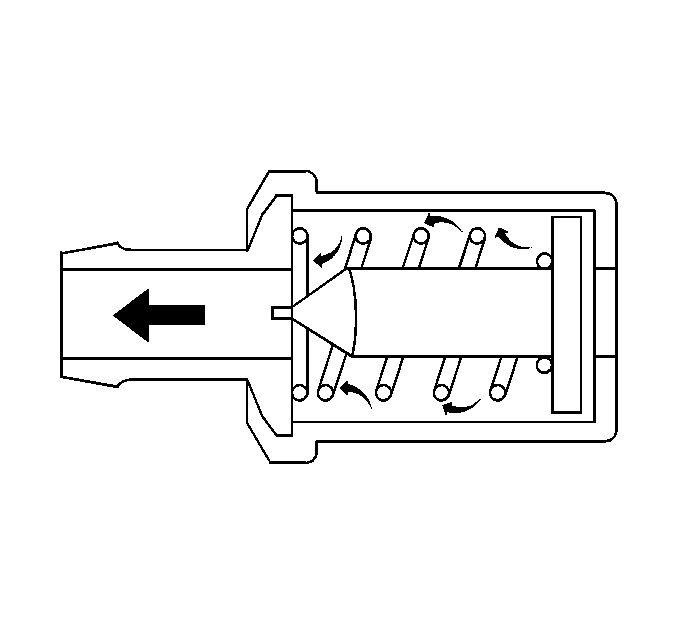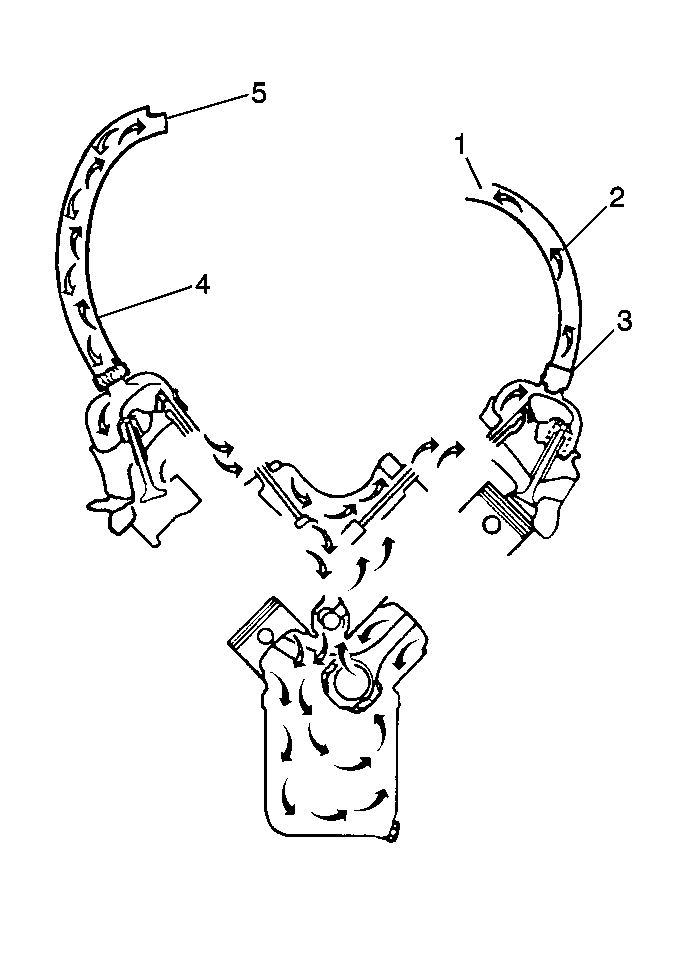General Description

A crankcase ventilation system is used to consume crankcase vapors in the combustion process instead of venting them to atmosphere. Fresh air from the throttle body is supplied to the crankcase, mixed with blow by gases and then passed through a PCV valve into the intake manifold.
Operation

The primary control is through the Positive Crankcase Ventilation (PCV) valve which meters the flow at a rate depending on inlet vacuum. To maintain idle quality, the PCV valve restricts the flow when inlet vacuum is high. If abnormal operating conditions arise, the system is designed to allow excessive amounts of blow by gases to back flow through the crankcase vent into the throttle body to be consumed by normal combustion.
Results of Incorrect Operation
A plugged valve may cause the following conditions:
| • | Rough idle. |
| • | Stalling or slow idle speed. |
| • | Oil leaks. |
| • | Sludge in engine. |
A leaking valve would cause:
| • | Rough idle. |
| • | Stalling. |
| • | High idle speed. |
Functional Check of PCV valve
If an engine is idling rough, check for a clogged PCV valve. Replace the PCV valve, if required. Use the following procedure:
- Remove PCV valve from intake manifold.
- Shake valve and listen for the rattle of needle inside the valve.
- If valve does not rattle, replace valve.
With this system, any blow-by in excess of the system capacity (from a badly worn engine, sustained heavy load, etc.) is exhausted into the intake manifold and is drawn into the engine.
Proper operation of the crankcase ventilation system is dependent upon a sealed engine. If oil sludging or dilution is noted, and the crankcase ventilation system is functioning properly, check engine for possible cause and correct to ensure that system will function as intended.
